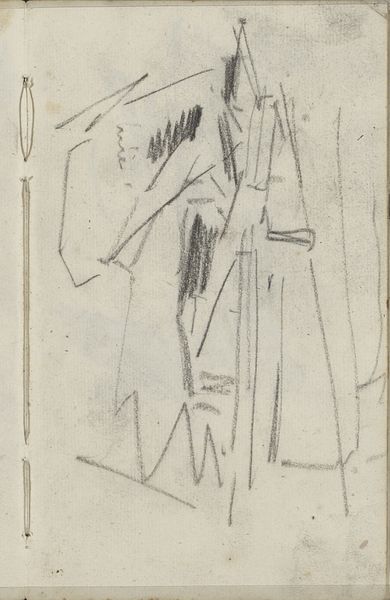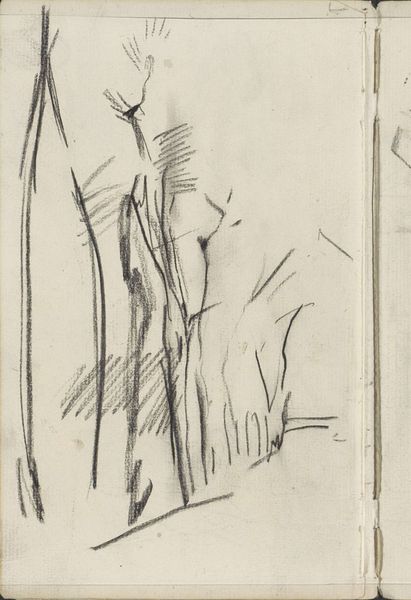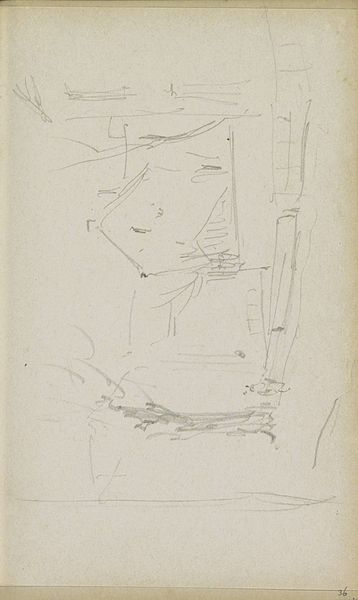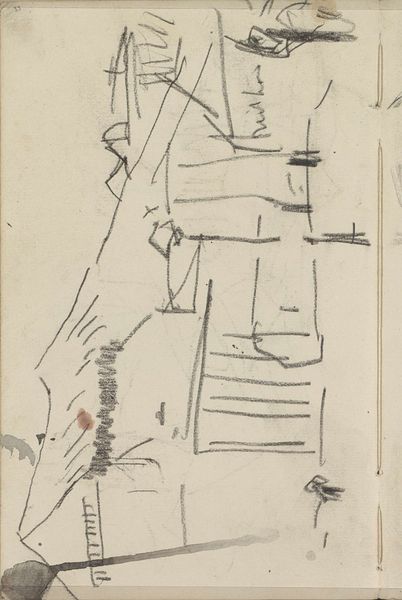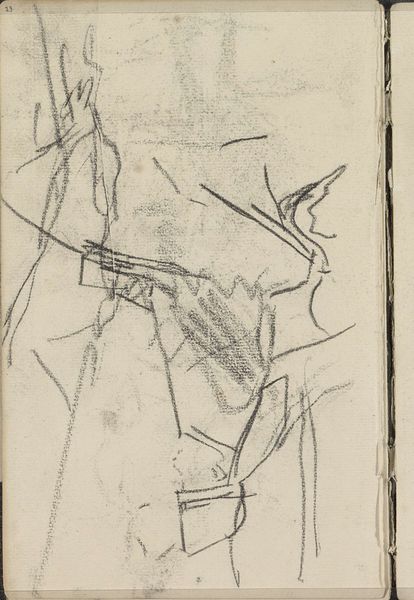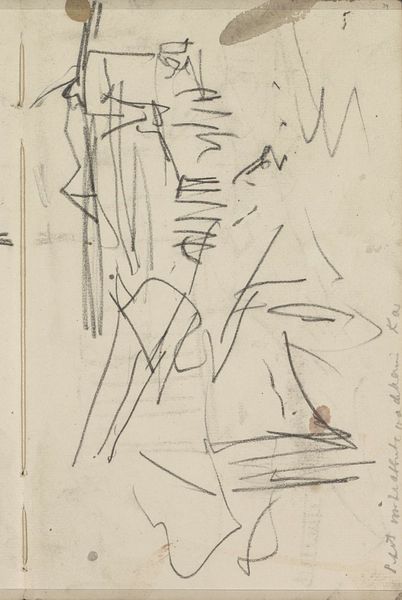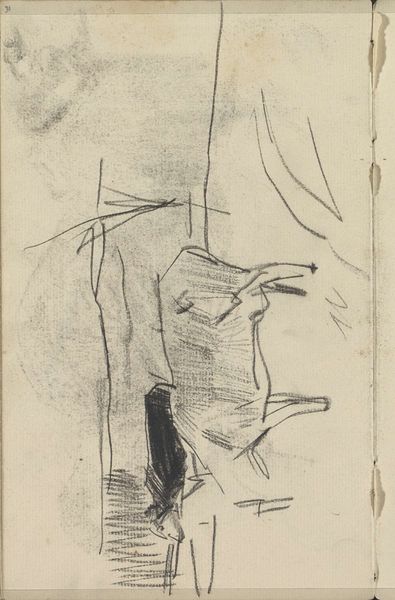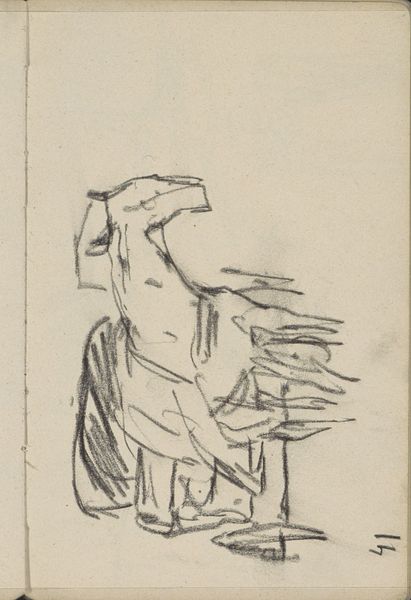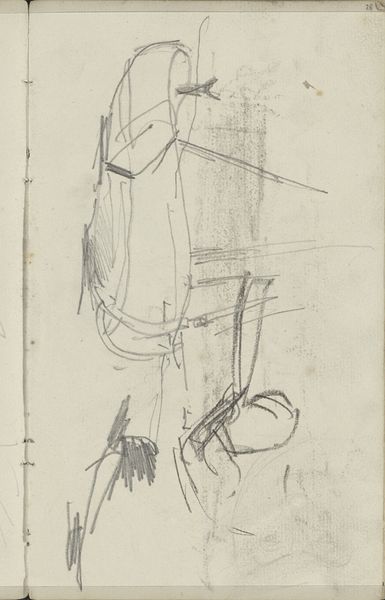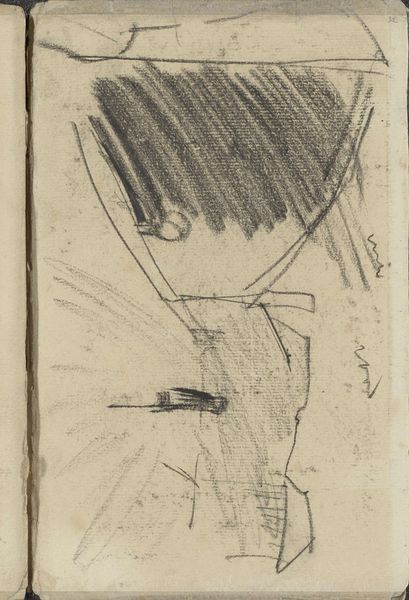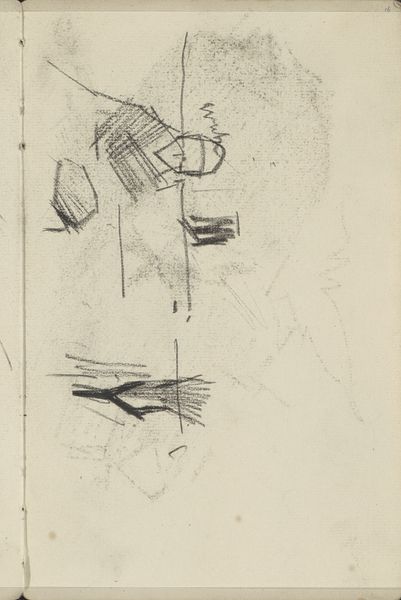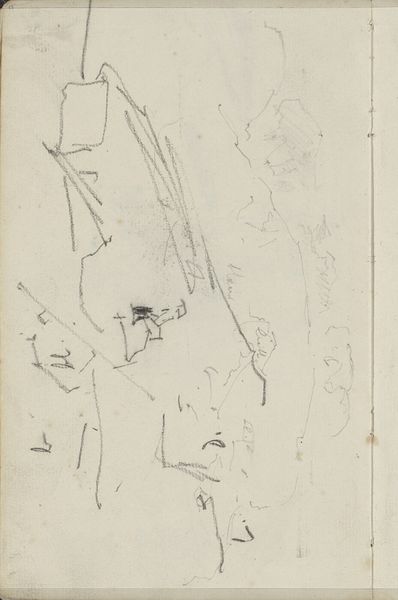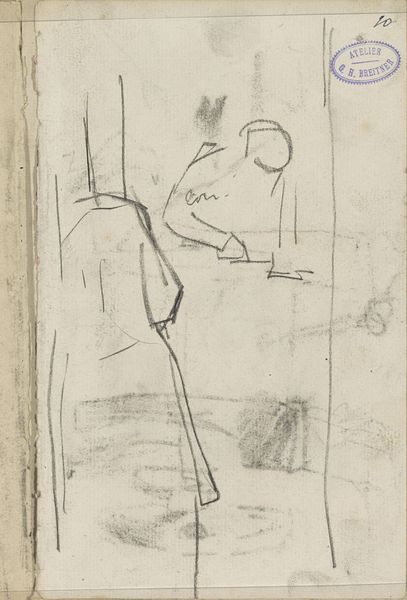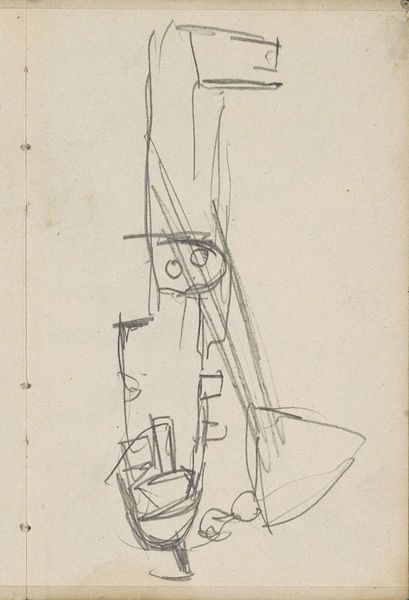
Copyright: Rijks Museum: Open Domain
Curator: George Hendrik Breitner's "Studie, mogelijk van bouwmateriaal," created sometime between 1886 and 1923, intrigues us today with its quiet, almost stark, presentation of architectural elements in graphite on paper. It is held in the Rijksmuseum's collection. What is your initial take? Editor: My first thought is simplicity and sparseness. The lines feel very raw and almost fragile, but the geometric shapes create a stark composition. I sense the sketch’s immediate quality but struggle to reconcile its forms into anything substantial. There's a lonely feel. Curator: It’s precisely that contrast, the rough, seemingly spontaneous lines capturing rigid geometry that interests me. Breitner, known for capturing Amsterdam’s vibrant street life, seems here to strip the city back to its bare bones, its basic constructive forms. One must ask: What inspired him to draw the basic structure material of buildings, perhaps foreshadowing the more abstract, geometric works of De Stijl to come. Editor: Absolutely! The composition here relies almost entirely on the bare, intersecting lines, it has the immediate feel of geometric forms interacting within space. We get circles bisected by more hard lines. There’s no clear depth or even explicit form. It exists as an investigation into how space is perceived via structure. I wonder what the symbol-laden viewer during Breitner’s time thought about an apparent “unfinished” aesthetic choice to architectural depiction. Curator: His technique underscores the realities of urban change; a city in constant construction, renovation and yes, even destruction. I’m certain his contemporaries knew his works held those feelings, because those structural elements would become as identifiable with Amsterdam as his better-known scenes. So while not overtly political, it’s a statement on modernity through the lens of the ever-evolving cityscape, a sentiment to urbanization for those willing to explore what he reveals to us today. Editor: The skeletal quality of these buildings connects the rapidly modernizing cities to broader ideas. Architectural icons from throughout antiquity up to modern art draw upon our collective conscious. I'm beginning to see this as the basis for nearly every structure throughout civilization. A primal representation with few markers of unique place. Curator: Your insight there, really brings home the fundamental tensions in Breitner’s art; the unique specificity of place rendered with almost generic symbolism of modernity. He allows a broader symbolic function than many observers at the time would be willing to admit! Editor: Exactly! Thinking about those tensions, this seemingly straightforward sketch speaks to our understanding of symbolic language of structural form that pervades our societies. I might not have noticed this connection, had it not been brought to my attention.
Comments
No comments
Be the first to comment and join the conversation on the ultimate creative platform.
